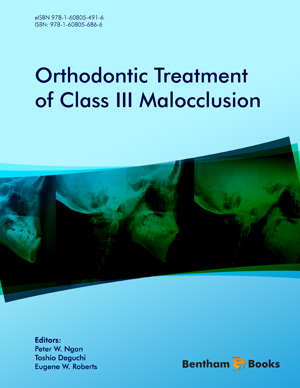Abstract
It has been reported that mandibular growth that was retarded and/or redirected during growth modification therapy could not be maintained during the retention period. However, research is necessary to substantiate these findings. During the last 15 years, the authors have studied the morphology, growth, function and treatment effects in Class III malocclusion. For patients with Class III malocclusion, the growth of the mandible is already 3 mm larger than its Class I counterpart by 4-5 years of age. It is also generally accepted that skeletal Class III malocclusions worsen with age, with 3 to 4 mm (or 0.5-1.0mm/year) greater increase in mandibular length compared to Class I mandibles in both genders, during the growth period. Facemask therapy is currently an accepted approach to treatment of Class III malocclusion with maxillary deficiency in young patients. On the other hand, two years of chin cup application showed a more effective orthopedic treatment and a diminished skeletal relapse at the post-retention period. Previous publications by the authors have compared the growth, TMJ response and treatment strategies with reverse headgear or chin cap compared to untreated subjects. In the current article, a systematic review was conducted to provide an evidence-base for the following orthodontic questions: Are there differences in mandibular growth between Class III and normal individuals? If so, what is its magnitude and is it clinically relevant? How is mandibular growth changed following orthopedic treatment in Class III malocclusion? Are these changes stable?
Keywords: Upper incisor lingual inclination, Moderate retrusive of the maxilla, optimal age for treatment, Concave profile, Increased length of the mandible, Crosssectional growth studies, Longitudinal studies of mandibular growth, Anterior cross bite with functional shift of the mandible, Backward rotation of mandible, N-vertical (N-A, N-B), Chin cup appliance, Reverse-pull headgear, Non-extraction treatment, growth reduction, mandibular shape and size, Experienced orthodontist, Duration of treatment, Patient treatment choice, Magnitude and duration of loading, Stability, TMJ effect.
















